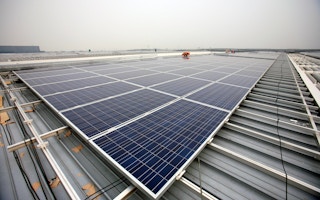What is going on?
A pandemic is a deeply unwelcome yet potent agent for change. It is a test for the stability of entire nations and questions the status quo on many different dimensions. While for many of us, this has meant remote working and taking up a new hobby, for a handful of entrepreneurs, it was the dawn of a new era.
For them, the reality of the climate crisis and the cascade of CO2-neutrality pledges that coincided with the pandemic meant that they would take centre stage in some of the fastest growing industries needed to meet such targets, and through subsequent immense increases in demand for solar panels, wind energy, electric vehicles (EVs) and more, turn their businesses into modern success stories and themselves into “climate billionaires”.
Although placing innovation at the forefront of the climate crisis is important, it is also crucial to ask whether those that facilitate the paradigmatic shift towards a sustainable planet are actually sustainable themselves. Let’s have a look at the data, shall we?
What does the data tell us?
Needless to say, this select group of wealthy businesspeople spans far beyond Elon Musk, and is in fact dominated by Chinese entrepreneurship. Manufacturers of EV batteries, solar wafers, packaging and more compete for the climate crown, and reveal some interesting patterns in doing so. While none of the companies score exceptionally well or poorly on an aggregate ESG rating level, a more granular analysis reveals significant room for improvement on seemingly important dimensions, such as human rights**(average 34/100*) and environmental stewardship**(average 40/100*) across the group, hinting at difficulties in producing the solutions for a better tomorrow under consideration of its societal and environmental impact.
Trends within industry groups point at a below-average performance on forensic accounting**(average 26/100*) within Electrical Products & Components and lower scores on resource use**(average 32/100*) for the EV industry, highlighting the fierce competition to please capital allocators and the struggle to source materials in a responsible way. The wider group’s sustainability stronghold remains the strong performance on capital structure**(average 68/100*).
What is the message here?
What the above shows is that innovation at the frontier of the climate crisis is not necessarily as shiny on the inside as it is on the outside. It is all too easy to equate climate crisis solution providers with sustainability leaders and, in choosing to invest through one of the many recently launched thematic transition funds, neglect the fact that one may not actually contribute towards sustaining this idea of a carbon neutral future.
But there is hope, because the average numbers shown in the analysis have also been subject to a significant upward pull by positive outlier companies that provide solutions and do so in a sustainable, future-proof way. “How can I find these companies?” one may wish to know. It helps to consider the term, “KYI” – know your investment. I.e., critically examine a product’s marketing information, find out how portfolio companies are chosen, ask your financial advisor or relationship manager the right questions and do not shy back from drilling deeper until you feel comfortable that you made the right choice.
* Source: Arabesque S-Ray Data, as of 21st September 2021.
** Definitions (below): Source: Arabesque S-Ray.
|
Human Rights |
|
quantifies the adherence to and promotion of human rights throughout all business activities, incl. the supply chain |
|
Environmental Stewardship |
|
quantifies the impact of business activities on biodiversity and animal welfare |
|
Forensic Accounting |
|
quantifies overall earnings quality or the degree to which reported earnings properly represent a company’s financial health |
|
Resource Use |
|
quantifies efficient use of energy and other natural resources (incl. land and materials) |
|
Capital Structure |
|
quantifies relative level of leverage and how it might take away from a long-term focus in decision making |











